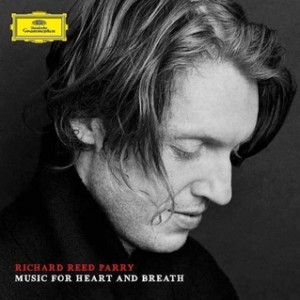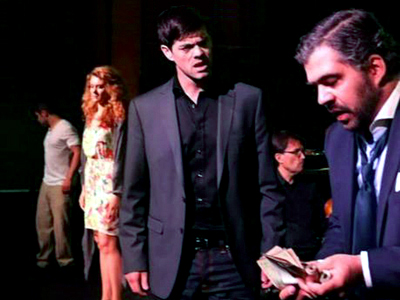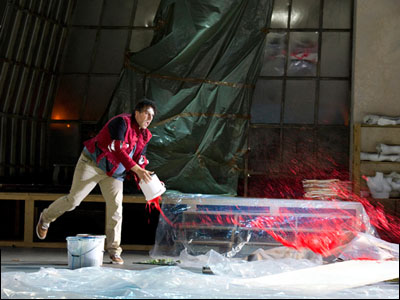By Sedgwick Clark
Leon Botstein just ended his 20th season as music director of the American Symphony Orchestra, during which he led an opera-in-concert performance of Richard Strauss’s Feuersnot, Bruch’s oratorio Moses, a concert of English music that included Walton’s Symphony No. 2, which Botstein called “one of the great symphonies of the twentieth century” (I’d say that about his First, myself), an impressively conducted retrospective of the late Elliott Carter’s music, and an equally impressively conducted program of 1920s avant-garde music by Antheil, Griffes (hardly modern, but a lovely respite in a challenging evening), Ruggles, Copland, and Varèse. The latter two’s Organ Symphony and Amériques, respectively, were masterful. Need one add “rarely played” to modify any of these works?
His final concert of this season, on May 30, was downright exhilarating. The ASO is shipshape these days, the program featured neglected works by Reger, Bloch, Ives, and Szymanowski during World War I, and performances were largely successful. As always, Botstein’s program essay was enlightening. He still resists taking the bull by the horns and interpreting the music, apparently believing that an accurate presentation of the notes is sufficient. Max Reger’s hymn to German supremacy, A Patriotic Overture (1914), complete with nods to Bach, Haydn, Bruckner, and Brahms, was properly broad in tempo and solemn in demeanor. I might have welcomed a touch more vigor and variation, but for all I know the performance was right on the metronome mark.
Whatever happened to the music of Ernest Bloch? Perhaps his attempt to capture what Botstein calls “Jewish national aspirations” in his music has caused conductors to think that it lacks universal appeal. Not even the once-popular cello concerto, Schelomo, gets played with any frequency these days. Well, I’m as W.A.S.P. as they come, and I enjoyed Bloch’s seldom-played Israel Symphony (1912-16)—and Botstein’s performance—immensely. Okay, the second movement (Allegro agitato, “Yom Kippur”) lacked atonement to my goyish ears. But in the outer movements, Botstein proved the Israel a moving experience.
Charles Ives composed his knotty Orchestral Set No. 2 in horrified response to the sinking of the British liner Lusitania by a German U-boat on May 7, 1915, which resulted in the deaths of nearly 1,200 passengers and led to the U.S. entrance into World War I. However noble its aspirations, I’ve always found it less engaging than the sensuous, pictorial First Orchestral Set, better known as Three Places in New England, or the wild mish-mash of the Fourth Symphony. Botstein calls No. 2 “a startlingly courageous essay in musical form, one that in its third movement highlights America’s exceptional status and dramatic entrance into a transformative historical event.” This Ives fan remains unconvinced, but not even Stokowski made much sense out of the piece.
Szymanowski’s steamy Symphony No. 3 (“The Song of the Night”) made for a resounding finale. Suffused with Scriabin, Ravel’s Daphnis et Chloé, and Szymanowski’s own personal brand of sensual orientalism, the Third is one of his most alluring works. The composer’s advocates have been predicting imminent acceptance for decades. Performances of this caliber are certainly in the right direction.
Glenn Dicterow’s NYPhil Heritage
How well I recall Glenn Dicterow’s initial concert in 1980 as the New York Philharmonic’s new concertmaster. I weaseled my way backstage, where I found him, shook his hand, and exclaimed, “At last we have a concertmaster!”
The Phil had had 14 years of six concertmasters or acting concertmasters since the retirement of John Corigliano, Sr., in 1966 after 23 years. His successor, David Nadien, who died only six weeks ago at age 88, had lasted for four years before returning to his previous, more lucrative pastures of recording studio commercials. I used to see him walking near Lincoln Center; he was the unhappiest looking man I’ve ever seen. Three of his successors were at the tail end of distinguished careers, one had very suspect pitch, and another hated playing in the Phil so much that he quit midterm to become concertmaster in Dallas and, later, a highly praised teacher.
The 31-year-old Dicterow was already a born leader when appointed to that position by Zubin Mehta. Thirty-four years later he is leaving the Philharmonic to join the faculty of the University of Southern California Thornton School of Music as the Robert Mann Chair in Strings and Chamber Music. A lot of West Coast violin students will thank their lucky stars.
The Philharmonic has thoughtfully released three well-chosen albums of Dicterow’s invariably musical solo concerto performances. The first, available on CD and download, contains Bruch’s No. 1 (Maazel, 2009), Bartók’s No. 1 (Gilbert, 2012), the Korngold (Robertson, 2008), and John Williams’s Theme from Schindler’s List (Williams, 2006).
The second and third albums are available on download only. The second contains Aaron Jay Kernis’s Lament and Prayer (Maazel, 2005), Bernstein’s Serenade (Bernstein, 1986), the Barber (Masur, 1996), and Waxman’s Carmen Fantasie (Mehta, 1990). The third album contains Prokofiev’s No. 2 (Mehta, 1985), Szymanowski’s No. 1 (Masur, 2004), and Shostakovich’s No. 1 (M. Shostakovich, 1982).
Superb Chamber Music at ERC
ERC? That’s the Ensemble for the Romantic Century, which has been mounting “theatrical concerts” since 2001 under the artistic direction of pianists Eve Wolf and Max Barros. The concerts “interweave dramatic scripts based on letters, memoirs, diaries, and other literature with music, reinforcing the music’s historical context through its connections with history, politics, philosophy, and the other arts.” Purists may sniff at such conflation, but the company’s thoroughly entertaining “The Trial of Oscar Wilde,” heard at Symphony Space on June 20, was also one of the best chamber-music concerts I heard this season.
Chausson’s Concerto for Violin, Piano, and String Quartet was the main work, its four movements spaced out throughout the evening among well-chosen pieces and movements by Satie, Fauré, Franck, Vaughan Williams. Interspersed between the musical selections, Oscar Wilde (Michael Halling) pleads innocent of his indiscretions with many of the famous witticisms for which he was famous, all for naught against the supercilious prosecutor, Lord Queensbury (Robert Ian Mackenzie), and Britain’s strict laws against “the love that dare not speak its name.”
One would think that the ERC’s young musicians had performed together for years. Violinist Susie Park, veteran of the group, hails from Australia and has many credits to her career; she was violinist of the Eroica Trio from 2006-12 and becomes concertmaster of the Kalamazoo Symphony next season. Russian pianist Daria Rabotkina has a Masters from Mannes and a Doctorate from Eastman, but such gorgeous tone and natural rubato doesn’t come from teaching alone.
ERC’s next program is entitled “Beethoven’s Love Elegies,” about his search for the perfect wife. It’s in the Berkshires, July 16-August 3, at The Stables Theatre at Edith Wharton’s The Mount, 2 Plunkett Street, Lenox, MA.




